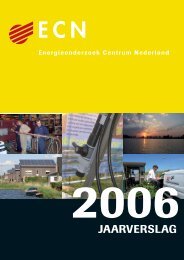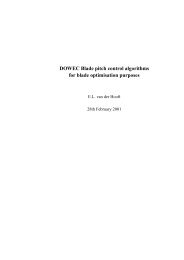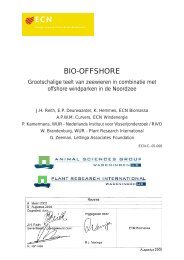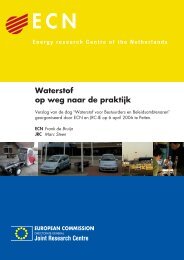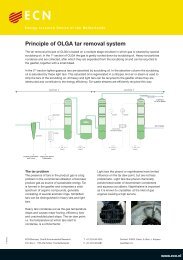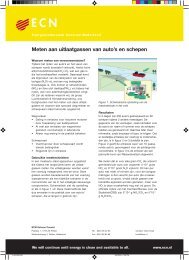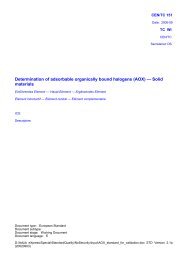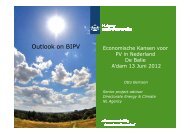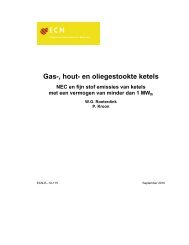PDF format (503 kB) - ECN
PDF format (503 kB) - ECN
PDF format (503 kB) - ECN
Create successful ePaper yourself
Turn your PDF publications into a flip-book with our unique Google optimized e-Paper software.
N2O INDUSTRY<br />
OTHER GHG<br />
CH4 LANDFILLS/MINING CH4 AGRICULT.<br />
CO2 CARBONATES<br />
CO2 FOSSIL FUELS<br />
N2O AGRICULT.<br />
= NOT COVERED IN THIS STUDY<br />
Figure 2 Western European GHG emissions (area is proportional to the emission in 1995).<br />
Emissions that are not covered in this study are indicated<br />
Western European bulk material flows are quantified in [2. The related CO2 emissions have been derived from<br />
data for energy balances and process emissions [1] The materials system represents a CO2 emission of approximately<br />
744 Mt CO2 per year, and additionally an emission of non-CO2 GHGs of 254 Mt CO2 equivalents<br />
per year (excluding carbon storage for biogenous materials). The production of less than 20 materials, characterised<br />
by their uniform production process, represents more than 75% of the greenhouse gas emissions for<br />
materials that are consumed within Western Europe. This paper focuses on the reduction of GHG emissions<br />
through changes in production, use, and waste handling of these materials. The following questions will be adressed:<br />
• What are the material flows in Western European where policies can have a significant greenhouse gas<br />
emission reduction impact ?<br />
• Which emission reduction options exist ?<br />
• Is it necessary to consider interactions of improvement options in the analysis ?<br />
• What are the dynamics of the materials system; is long-term planning possible and sensible ?<br />
• Must technological progress be considered in the analysis ?<br />
• To what extent can materials options reduce greenhouse gas emissions ?<br />
• How compare the costs of these materials related emission reduction options to the costs of energy related<br />
emission reduction options ?<br />
• Which materials strategies should be further developed (and which strategies not) ?<br />
Characteristics of the system from a GHG emission point of view<br />
A limited number of materials constitutes the bulk of the GHG emissions. Table 1 provides an overview of the<br />
most relevant categories.



